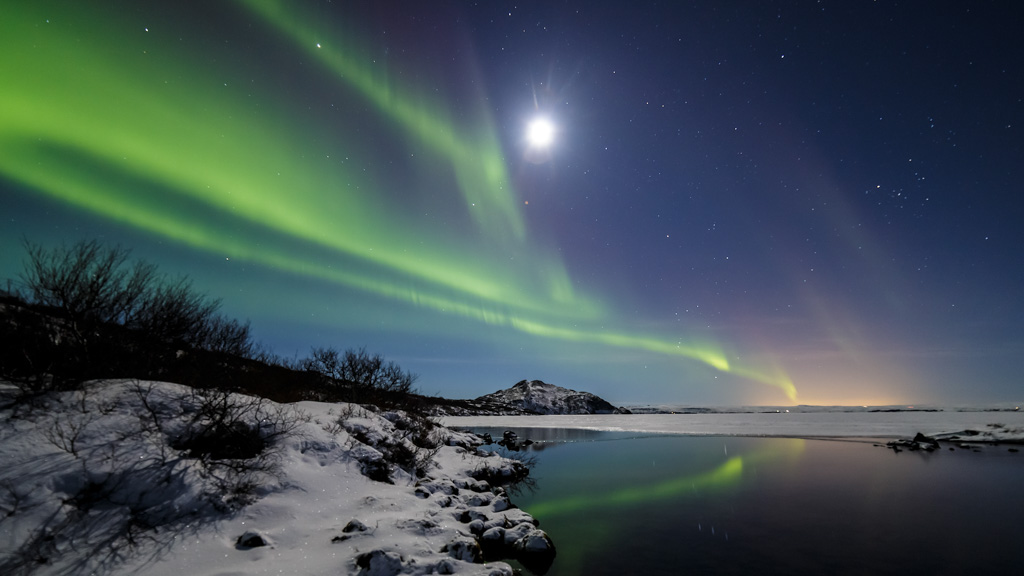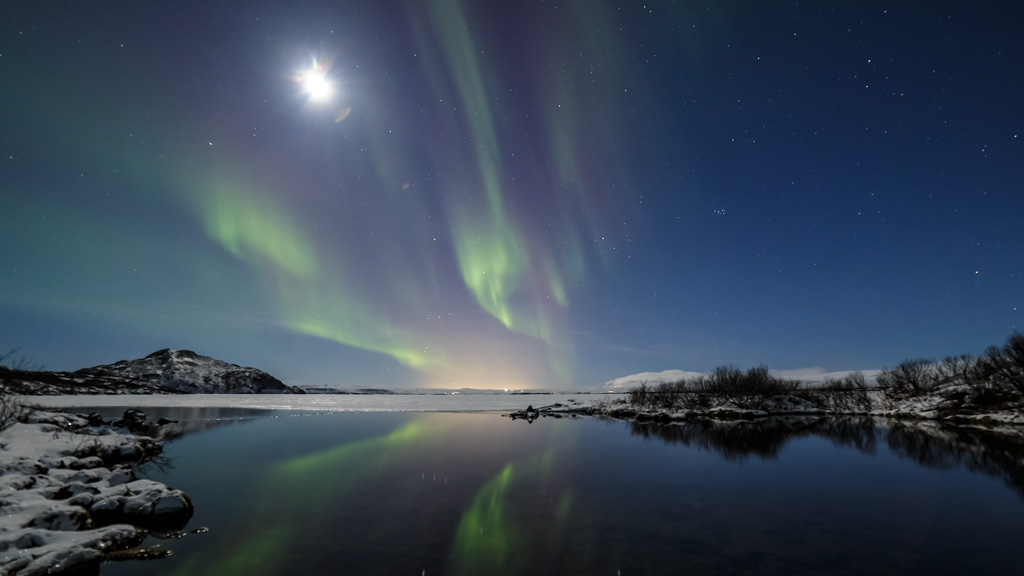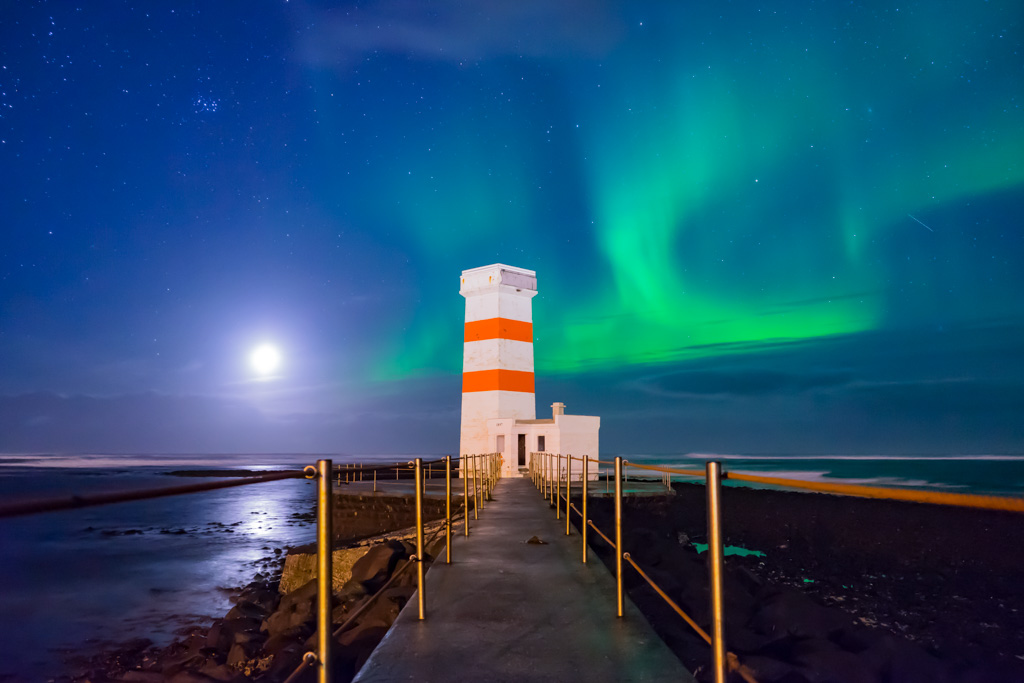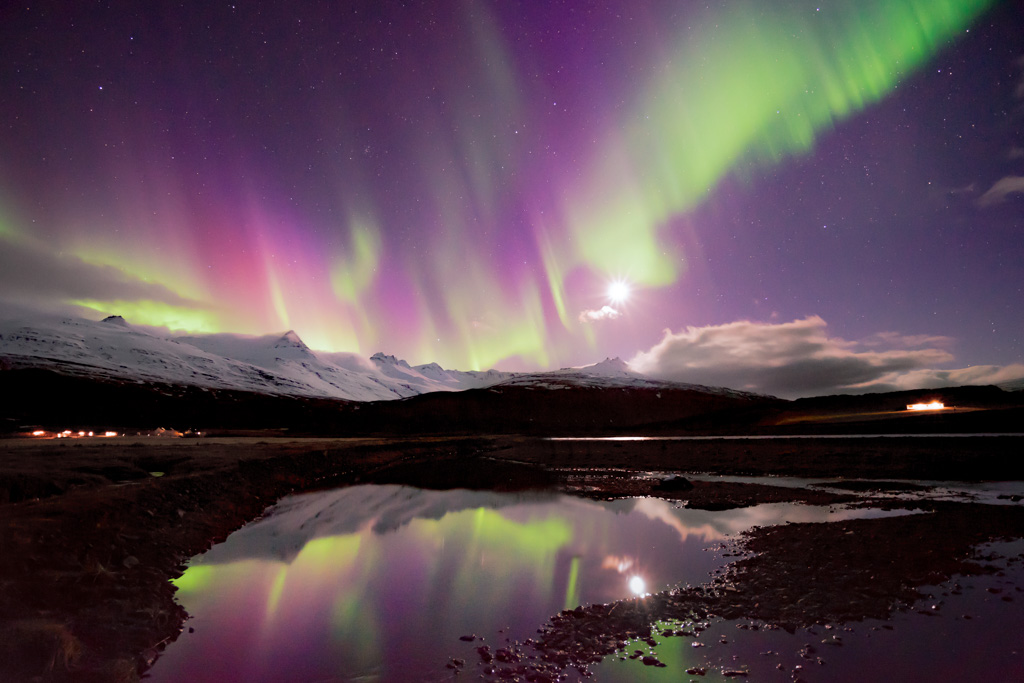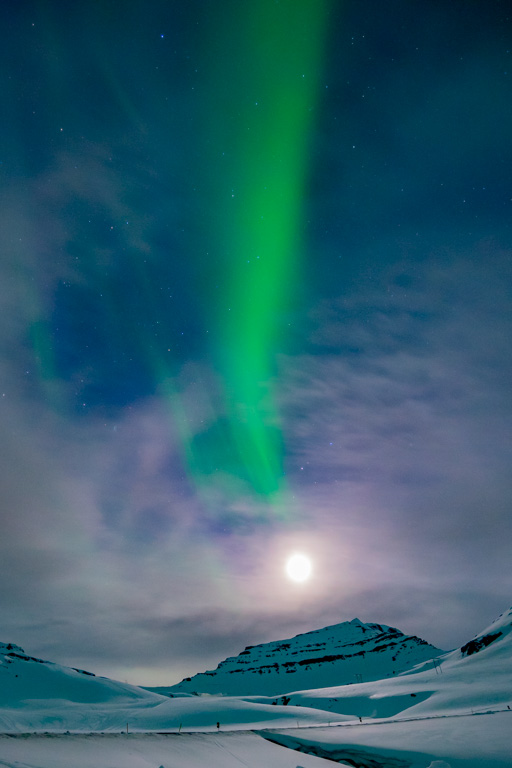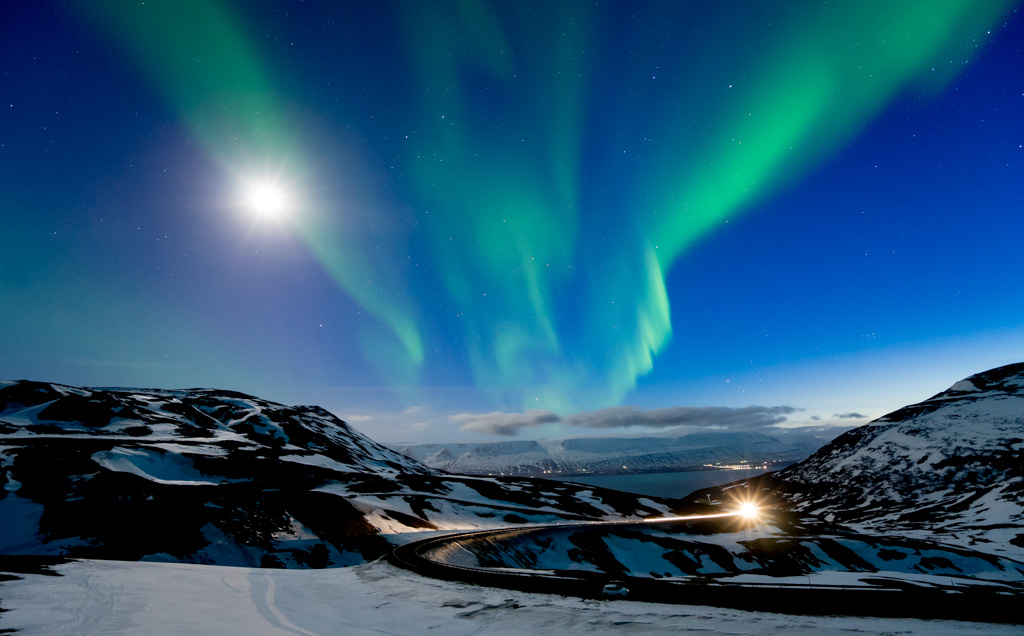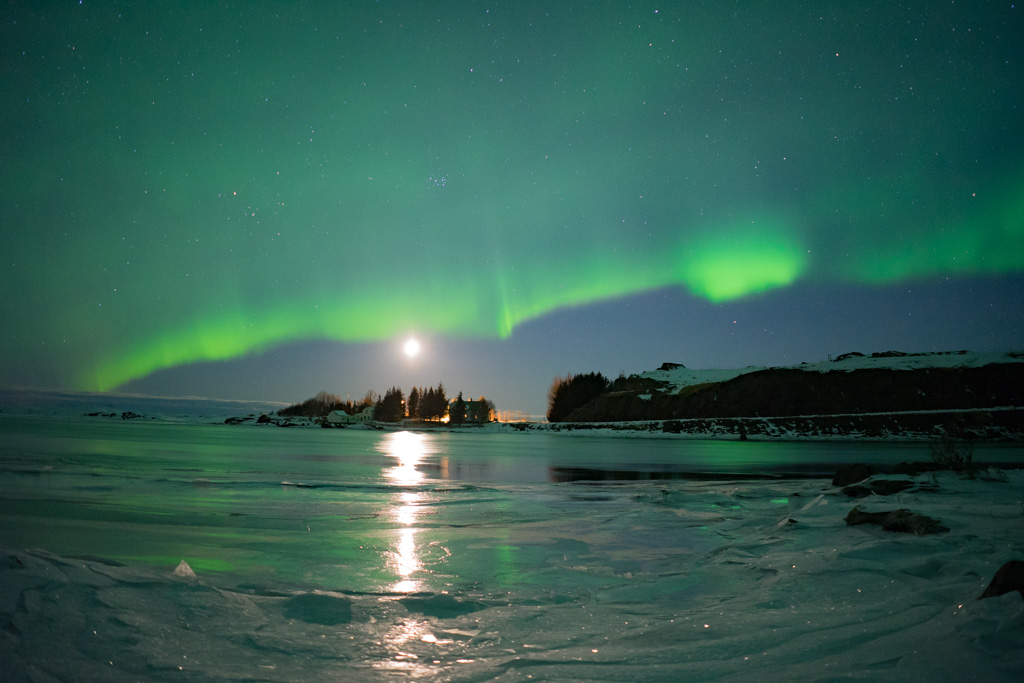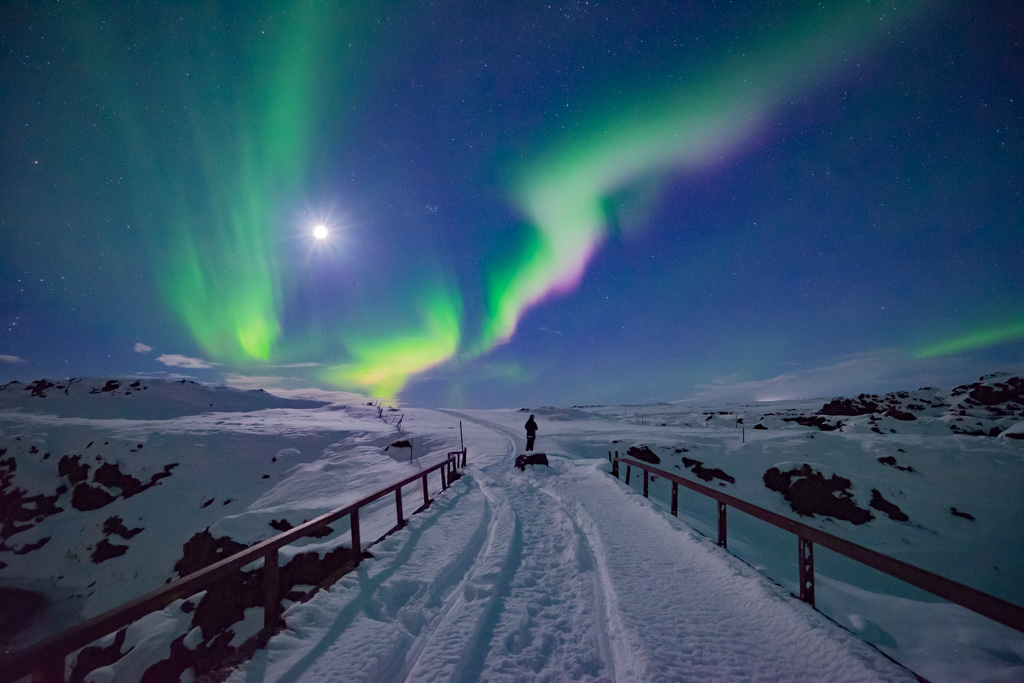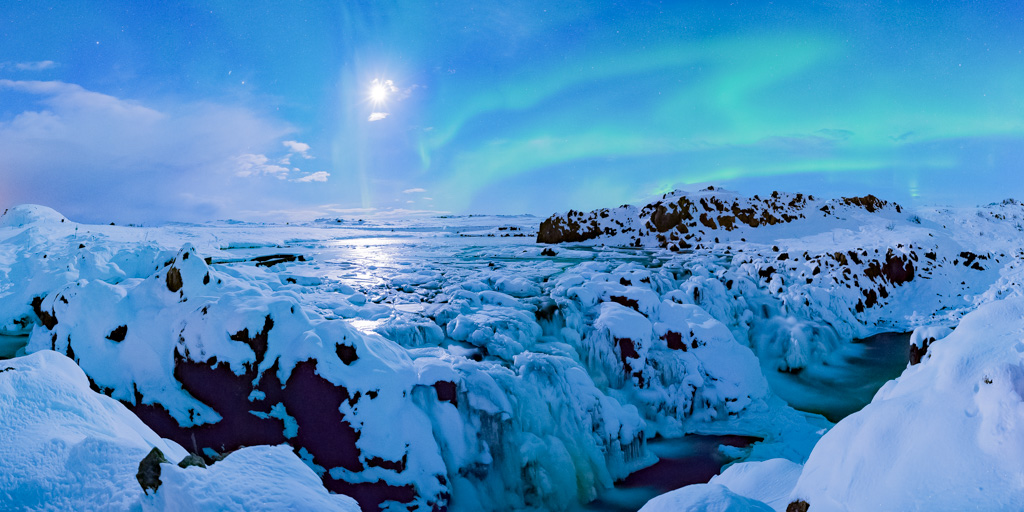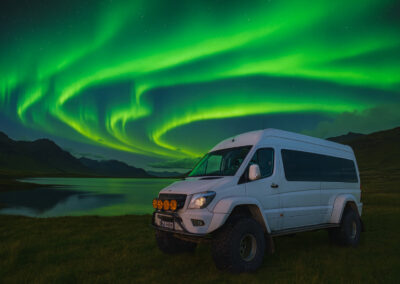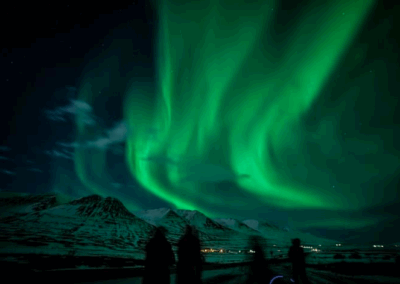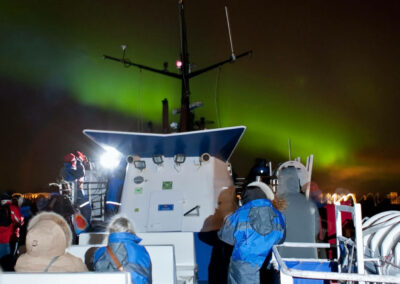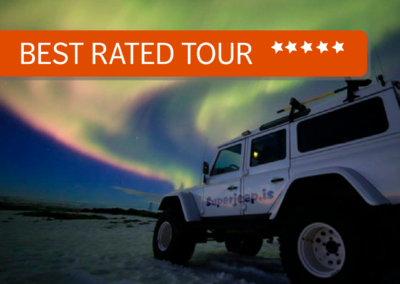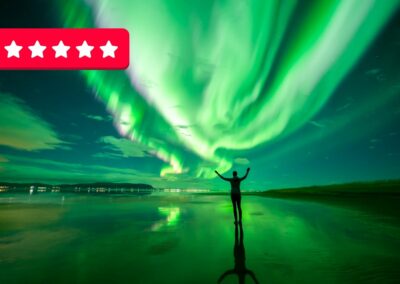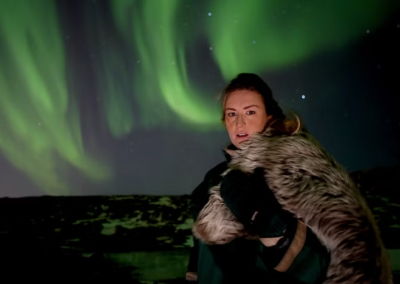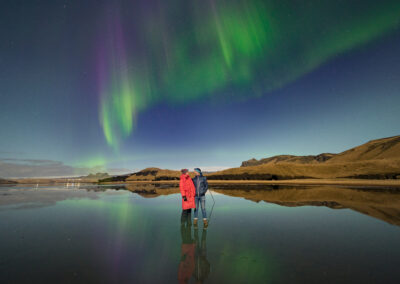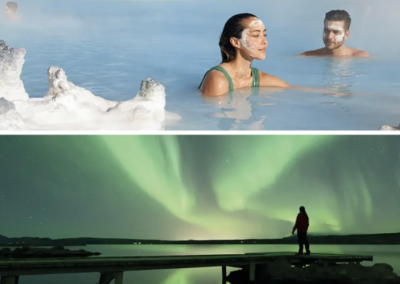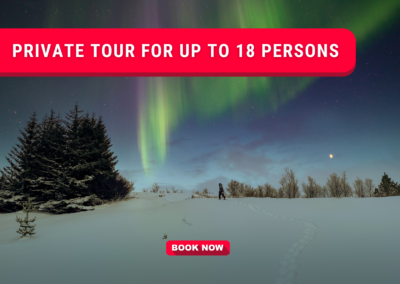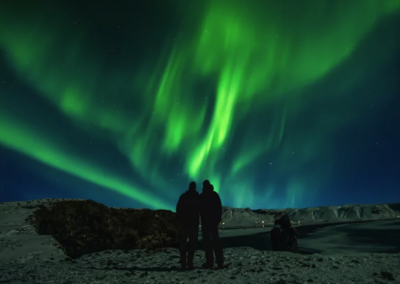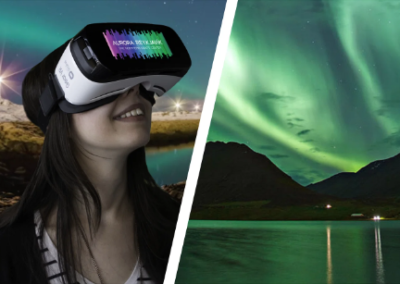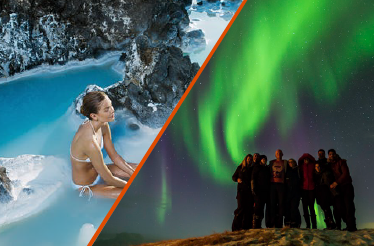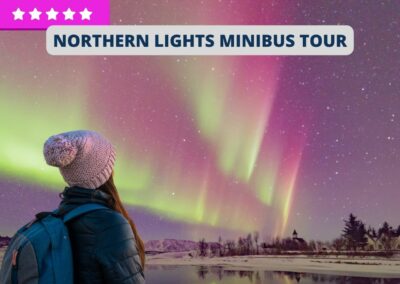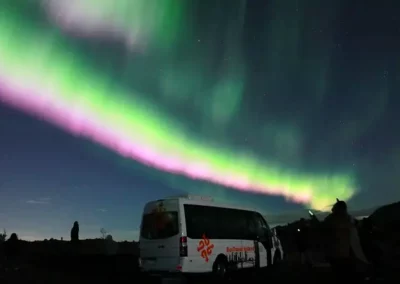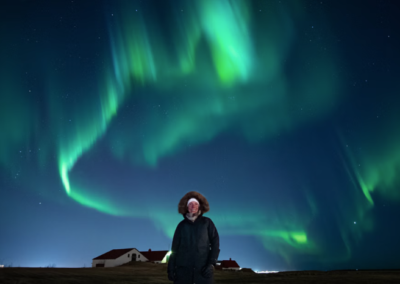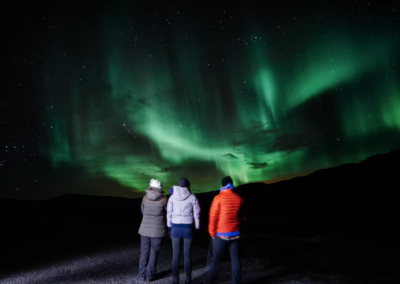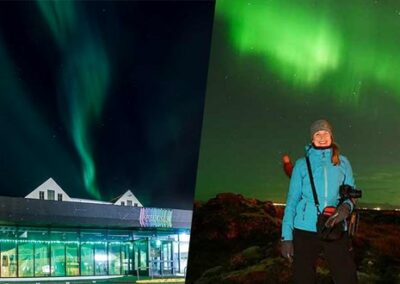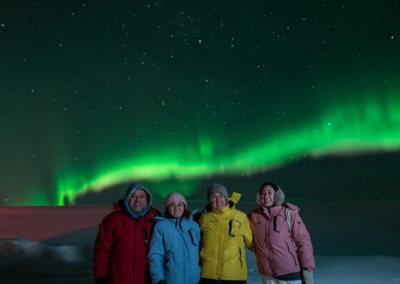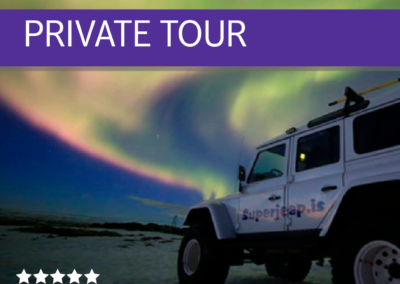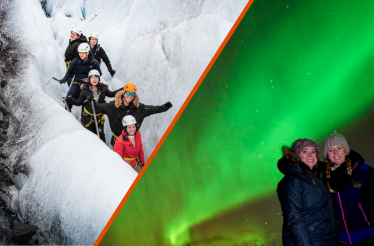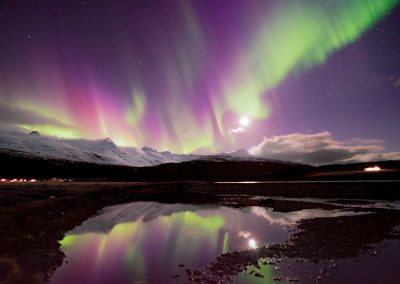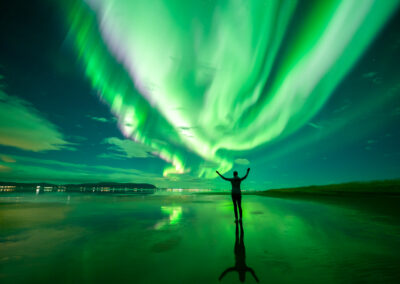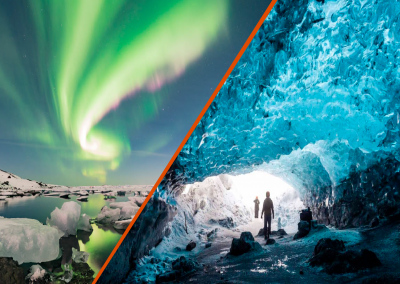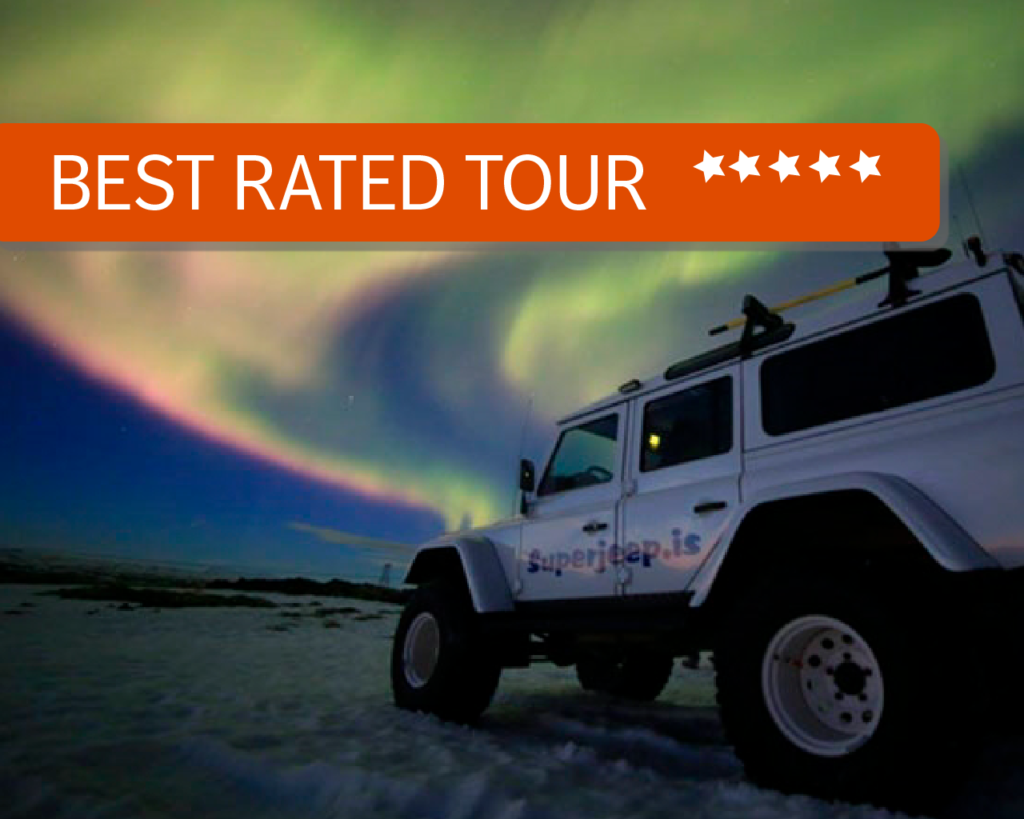Aiuto! C'è la luna piena! Rovinerà la mia esperienza dell'aurora?

Find a revised version of this article qui
Imagine this: You just made it in the subarctic region, right under the auroral oval. It seems like you’re incredibly lucky: You hit the right time of the year (it’s dark enough!), the solar activity is good, and – oh my – clear skies ahead! Fantastic! But then… whoops… you forgot to check on the moon! Round and full and bright will it appear at the arctic night sky, as if it had just one mission: Spoiling your lifelong dream of experiencing the magic of the northern lights aka aurora borealis.
So, here’s our spoiler: Don’t worry! It’s not all lost just yet. In fact, we as aurora photographers and filmmakers love the full moon, and for each month during the northern light’s seasons, these days are marked as “head out” in our calendar.
Aurora e luna piena al Parco Nazionale Þingvellir, Islanda
Does the moon affect the northern lights itself?
But let’s start from the beginning:
The Northern Lights are maybe the most magical natural phenomena we can witness from Earth. Their primary cause is activity on the Sun. Auroras happen when electrons emitted by the Sun react with different gases in Earth’s atmosphere. The charged solar particles excite those earthly atoms, causing them to light up, creating what we call the northern and southern lights. The conclusion? You guessed it. The moon has absolutely no effect on either solar winds or geomagnetic storms whatsoever.
It all depends on the strength of the aurora
Detto questo, come sa ogni osservatore delle stelle, la luna piena proietta molta luce nel cielo. E sì, potrebbe in qualche modo rendere più difficile avvistare l'aurora ad occhio nudo, allo stesso modo in cui la luce lunare può nascondere le stelle più deboli alla nostra vista.
Tuttavia, tutto dipende da quanto è forte lo spettacolo a cui stai assistendo. Un'aurora debole potrebbe essere oscurata dalla brillante luce lunare, ma se c'è un livello di attività solare da moderato a elevato, ci sarà comunque una buona visione dell'aurora boreale. Contrariamente a quanto potresti aver sentito, è possibile vedere l’aurora boreale anche quando c’è una luna molto brillante nel cielo.
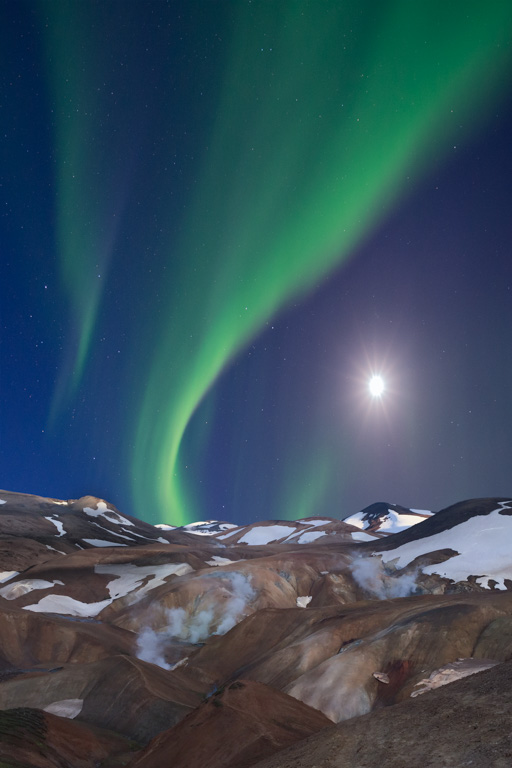
Aurora e luna piena nell'entroterra islandese
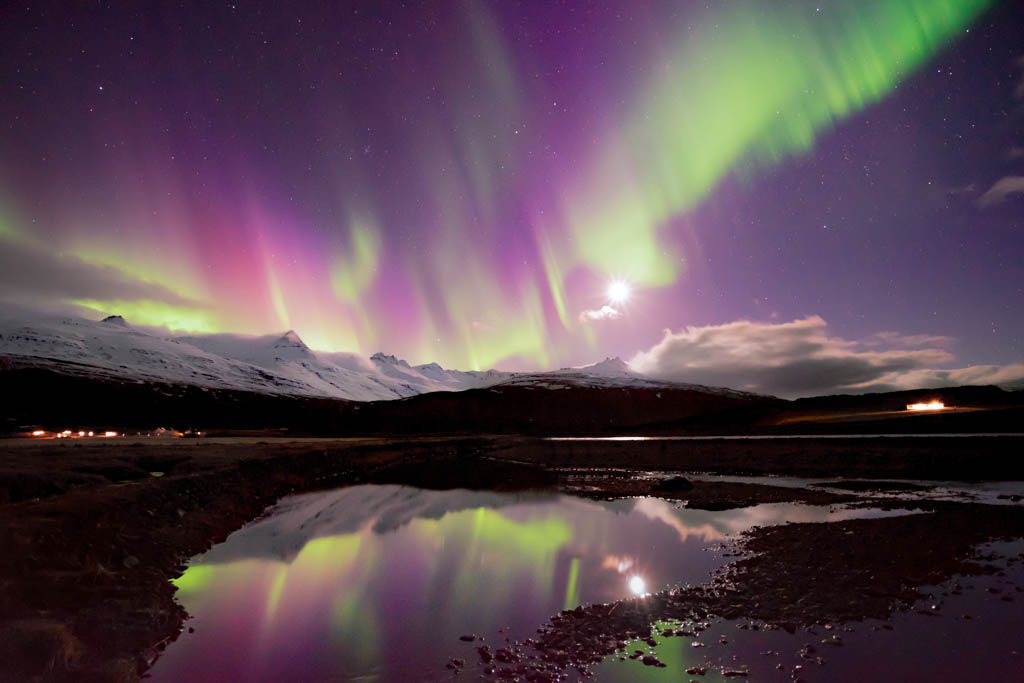
Aurrora durante una notte di luna piena nei fiordi orientali, Islanda
So why do we love the full moon for northern lights hunting?
Scorri la nostra gallery e troverai facilmente la risposta nelle nostre foto:
- Moonlight lights up the foreground and makes the whole scenery even more magical.
- The sky occurs beautifully in deep blue instead of pitch black.
- Especially for Northern Lights portraits, the moonlight can softly light up people, so they won‘t just occur as silhouettes.
- The shutter speed is much shorter, making it easier for people to stand still and therefore occur sharply in long-exposure shots.
- The shorter shutter speed also makes time-lapses look much more realistic and closer to real-time videos.
- Due to the shorter shutter speed, the shapes and patterns of the northern lights occur much more clear in the pictures.
- Last but not least, a full moon night makes it also much easier for us to orientate in the dark and to enjoy the scenery to the fullest. Believe me, it has its advantages if you don‘t have to worry to disappear in a lava cave with just one wrong step in the darkness. It‘s still Iceland after all!
In conclusione: se vuoi aumentare le tue possibilità di osservare l'aurora boreale a occhio nudo, cerca di evitare qualsiasi luce lunare. Se miri a fare una bella foto, unisciti a noi quando c'è la luna.
Compra il biglietto, parti all'avventura. Qui trovi la nostra selezione di tour:

